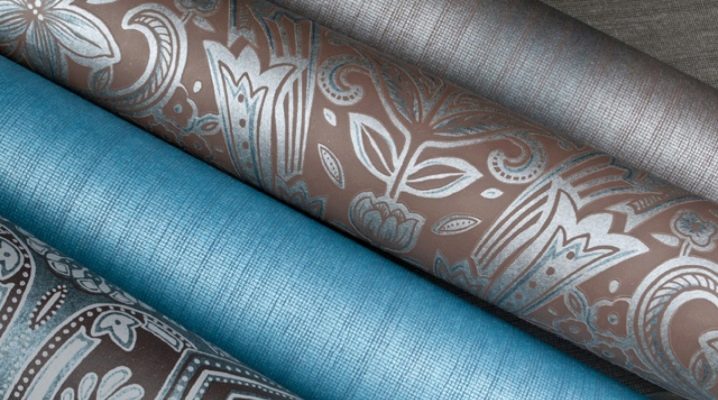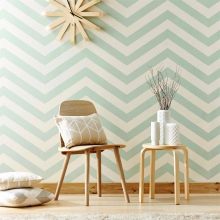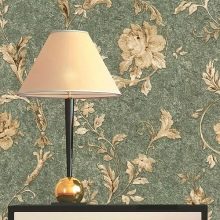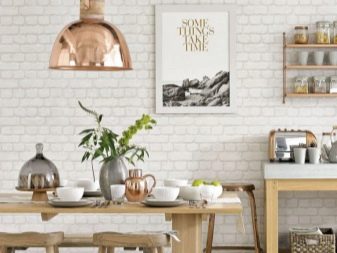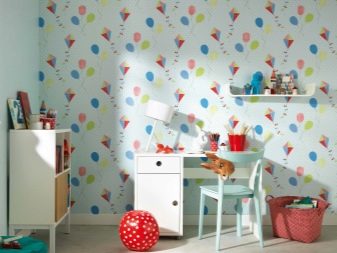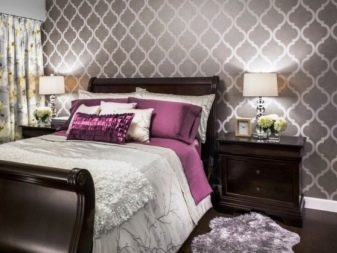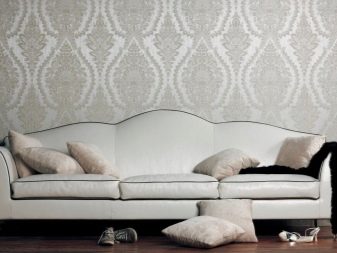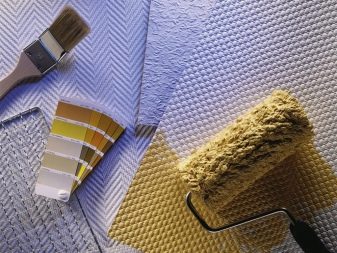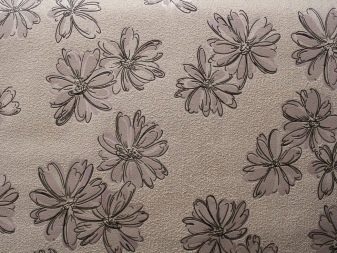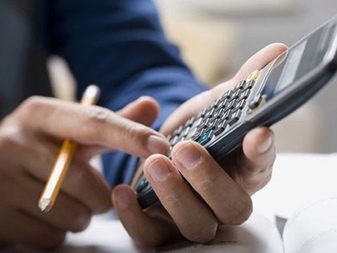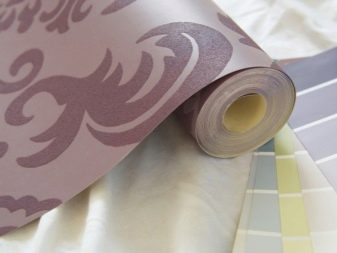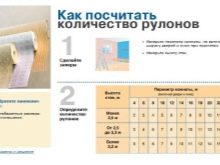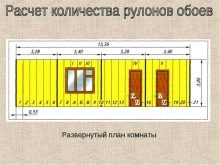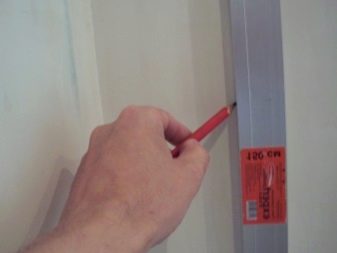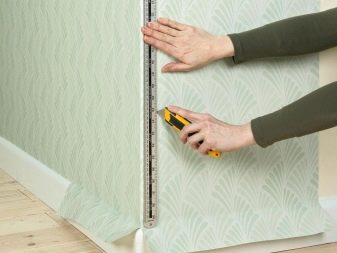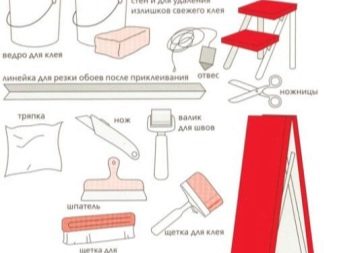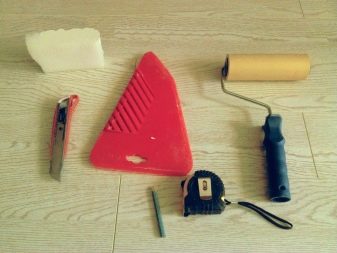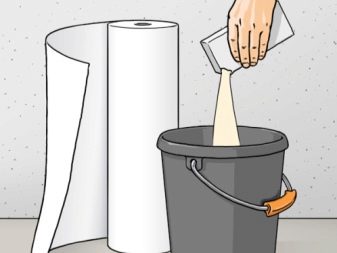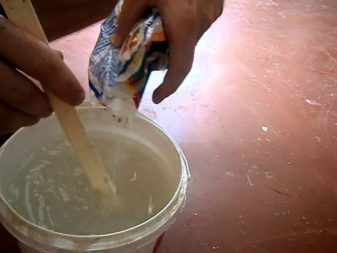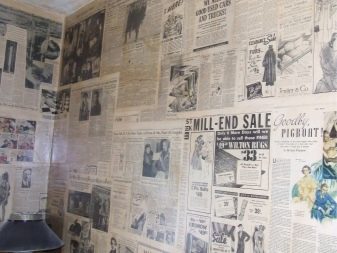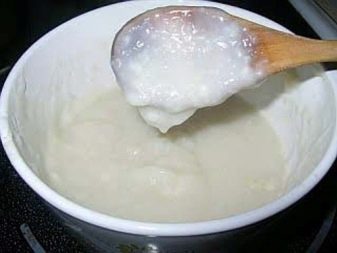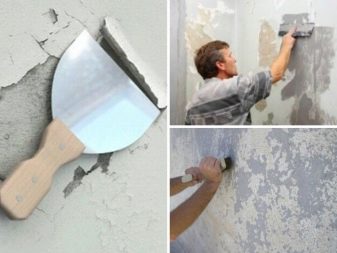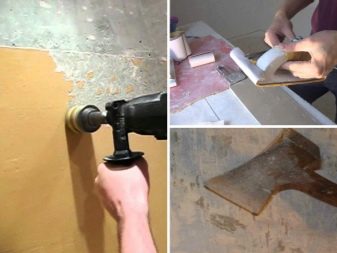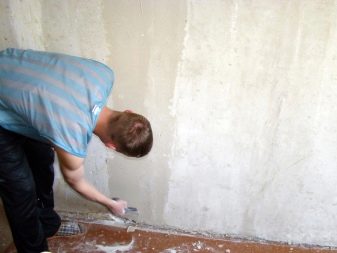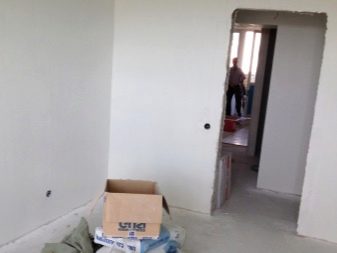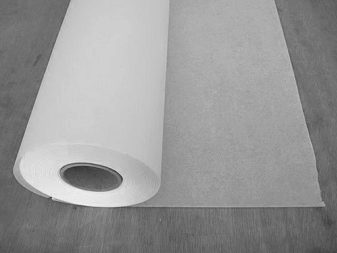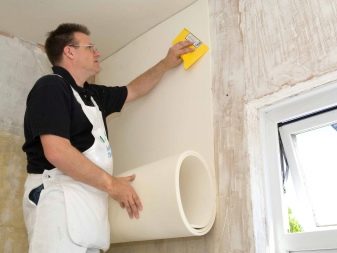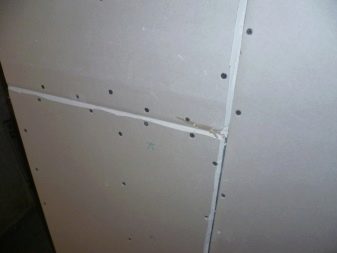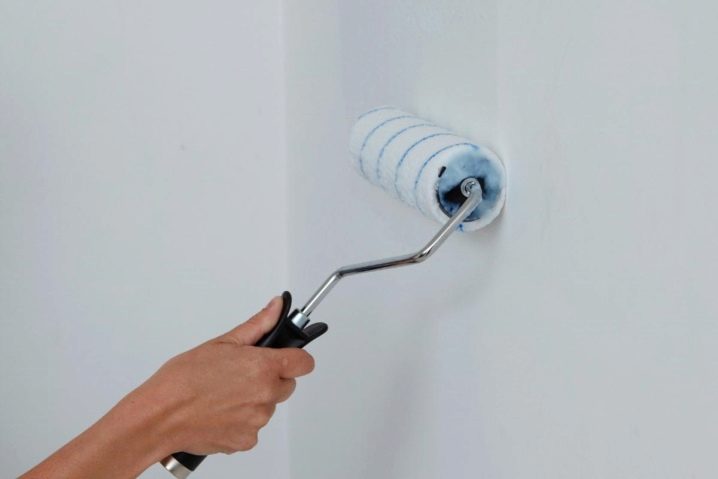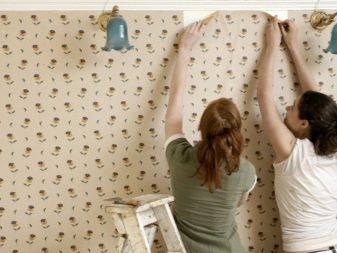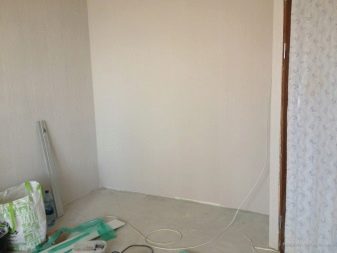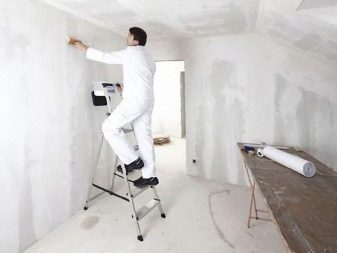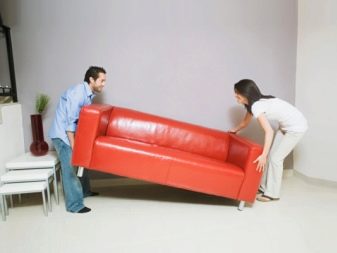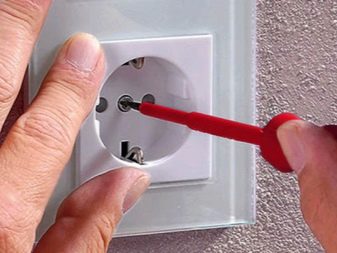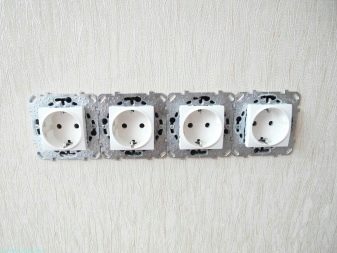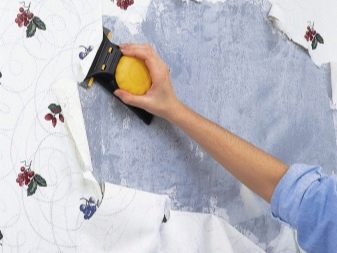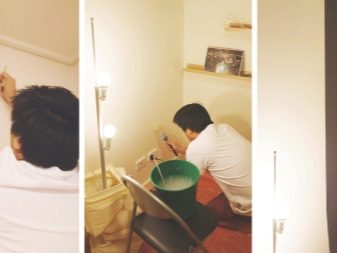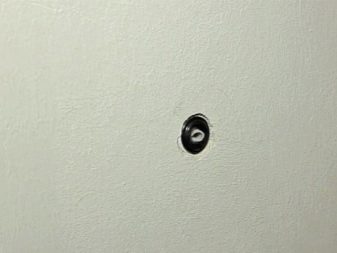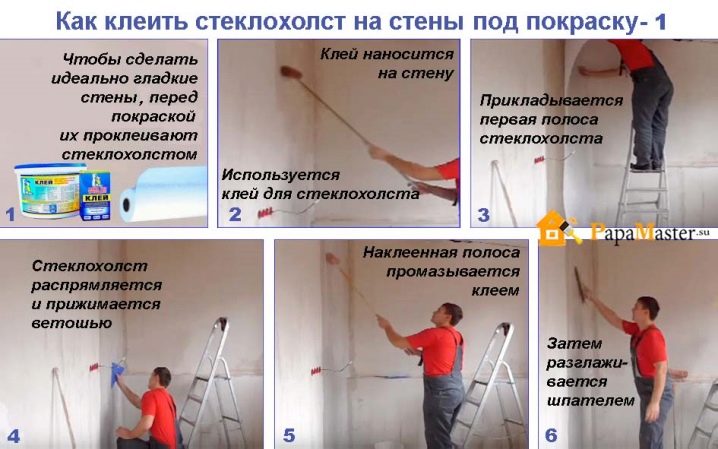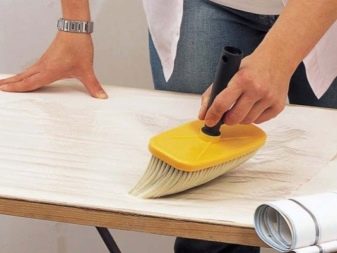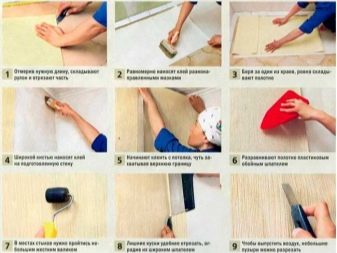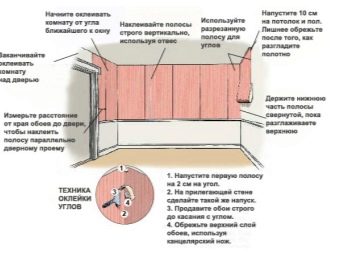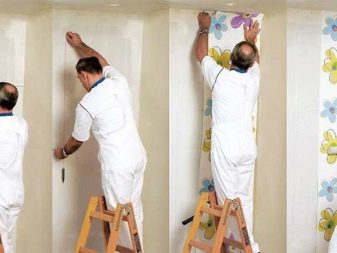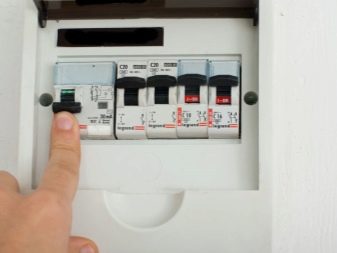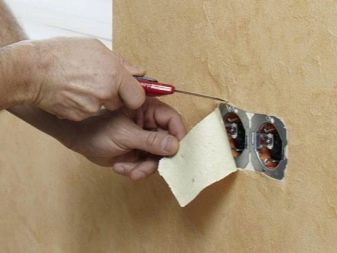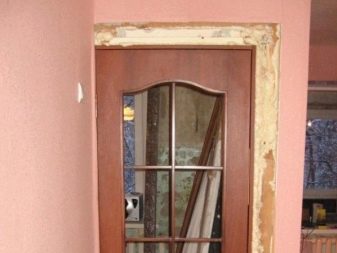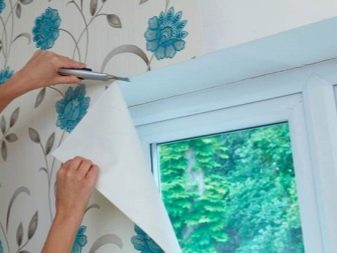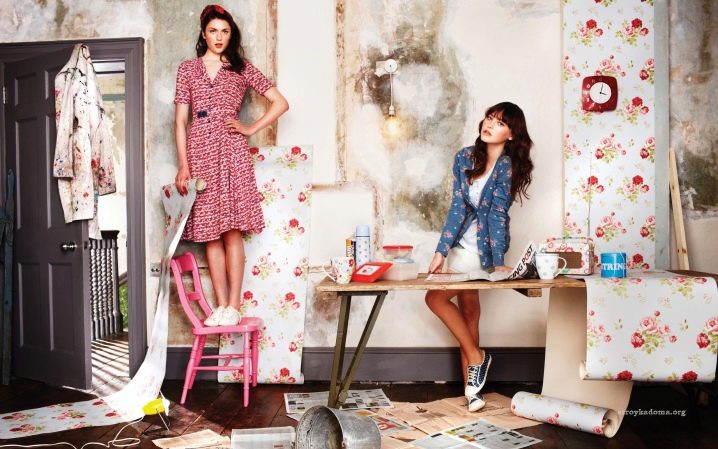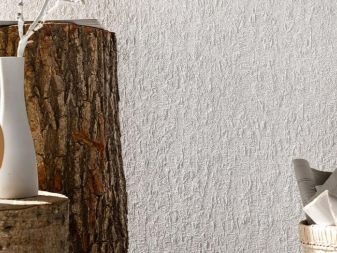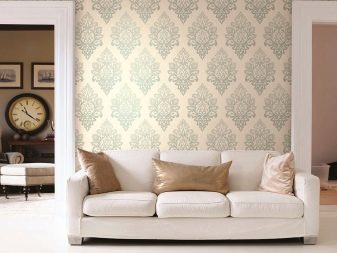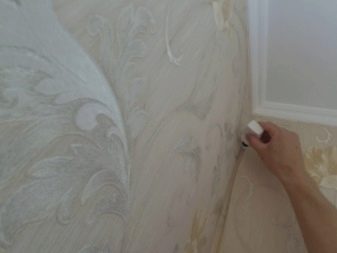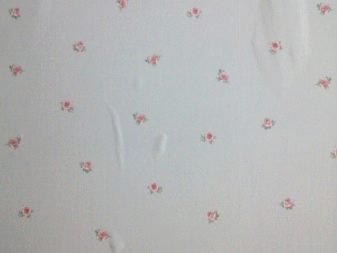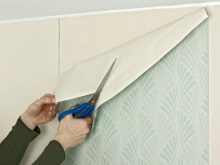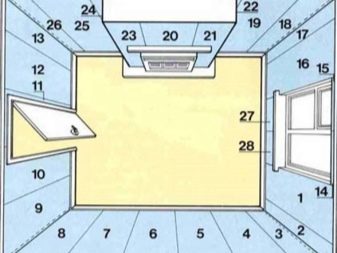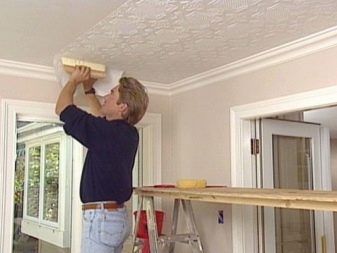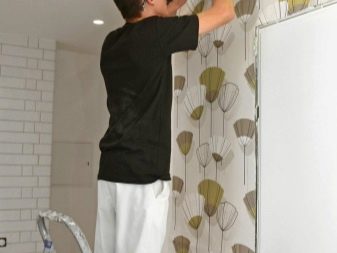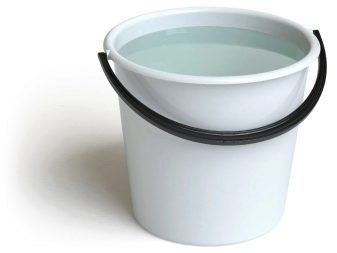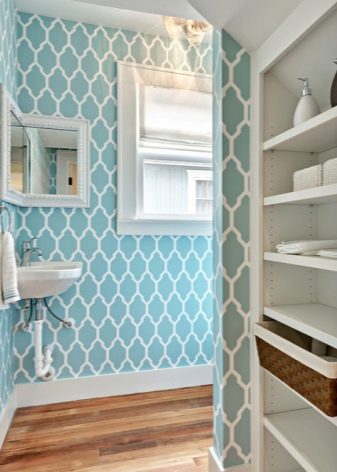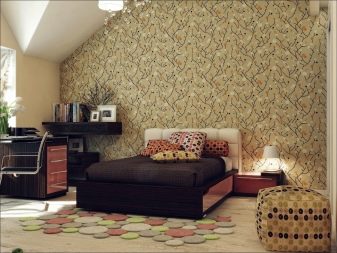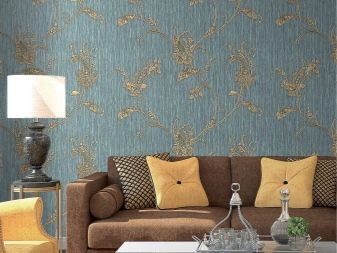How to glue non-woven wallpaper?
According to statistics, in the building stores often buy non-woven wallpaper. They are available in various colors, practical in operation and sold at affordable prices.
Special features
Based on the name, it is clear to anyone that non-woven wallpapers are made from non-woven. This substance, unlike paper, is capable of passing air, has vapor permeability. The cellulose fibers in their composition help to hide the irregularities of the walls. Flizelin does not leave bubbles and stains. The top layer of non-woven wallpaper can be covered with vinyl, thanks to this wallpaper can be smooth, rough, used later for painting.
Vinyl facilitates the maintenance of wallpaper, they are easy to wash, even with detergents.
Kinds
Vinyl It is better to buy wallpaper for rooms where the surface can be contaminated the most - kitchen, nursery and hallway. The usual damp cloth cleaned up any contamination: and droplets of fat, and pens of felt-tip pens, and the remnants of shoe cream.
Fabric Wallpaper looks great in the bedrooms, especially if the windows are covered with expensive curtain curtains. By the way, silk, viscon or flax is applied to the non-woven base - this determines the final cost of the product. Textile varieties and in the not glued form are heavy, respectively, and glue needs to be bought special for such varieties of wallpaper.
If you use the usual adhesive mixture, then the wallpaper, even pasted on the wall, in the end, still disappear.
Silk screen printing on a flizelinovy basis it is reached thanks to putting polyvinyl chloride and special fibers. In the subsequent hot stamping procedure, a certain pattern is fixed. The process is automated, so the wallpaper is sold at an affordable price.
Flizelinovye Photowall-paper is made by drawing a pattern on the base, on top of the wallpaper are covered with a special film, so that they do not fade, they are easy to wash.Flizelin for painting is used most often, because in a specialized store it is very difficult to choose a pattern and color, and using water-based paint, you can paint the wallpaper up to ten times. By the way, thin wallpaper on non-woven, and paper-based need to be painted with great care, such wallpaper after the second time can swell and even peel off.
Modern foamed wallpapers are characterized by high-quality relief, which even after repeated painting remains pronounced. In addition, it is worth noting that the structural wallpaper hides the irregularities of the walls and angles.
We consider consumption
Almost every person found that after the repair was completed there were unused rolls, glue, which was poured into a jar just in case of fire. It would seem that not so much surplus, but in any case, it is a waste of money. This is especially noticeable when you need to glue not one room or a corridor, but the entire apartment.
First of all, measure the length and width of the room, and then multiply the resulting amount by two. Thus, the perimeter is recognized, which is to be repaired.But there are almost no deaf rooms, even in the storage room there is a doorway, so you need to measure the dimensions of interior doors and balcony blocks and subtract the resulting amount from the total. In order to save, you can not glue the walls, which are filled with massive cabinets or walls. As a result, wallpaper glue will require only one box. In rooms with uneven symmetries - where there are niches and protrusions, you need to very carefully calculate the dimensions.
Remember that a small amount of wallpaper should always be at hand, because somewhere you can wrong cut or bend.
Instruments
For gluing non-woven wallpaper on the walls do not need special tools. It is enough to have a simple pencil, the main thing is that it should not be sharp, otherwise it will tear the wallpaper. Still need a ruler, preferably the entire width of the roll. Instead, you can use any flat plastic, metal or wooden rail. With the help of it is indicated the place to be cut. For this fit ordinary scissors. If one of the ends of the scissors has a sharp cut, this will ease the procedure.
The length and height are best measured using a tape measure, it should be at least 3 m. If the walls are uneven, you need a laser level. A spatula and a stationery knife are also useful. For the cultivation of wallpaper glue plastic ten-liter bucket fits, for clean water, you can use a smaller container. A roller, a foam sponge and a special brush will be needed to fix the result directly.
What to stick?
You should not take on the PVA glue, for this procedure it is best to buy non-woven glue. It is easy to dilute in water, using the instructions printed on the back of the package. First, water is poured into the bucket, and then powder is slowly added. At the same time it is necessary to mix the resulting slush thoroughly. After allowing the solution to infuse, after some time you have to re-stir it, and the glue is ready. It remains only to put glue on the wallpaper and take a roller.
Suitable surface
Stick wallpaper on the wall or use decorative plaster - this question arises all the time before the start of cosmetic or major repairs. But no one will give an exact answer to it, it should be chosen, starting from the interior, design project and financial condition.Wallpaper, as a rule, are chosen more often due to their simplicity and saving time spent on repairs. In the Soviet years, newspapers were used for high-quality gluing of wallpaper. Starch was diluted, newspapers were stuck, and only then wallpaper was attached to them.
Now it is not necessary to use the substrate, because non-woven wallpaper glue on the concrete wall and painted walls.
Thin fabric wallpaper and the same building material with silk-screen printing have only two layers - basic and printing, so you should carefully prepare the surface for them. Otherwise, all the irregularities will be noticeable through the layer of paper or non-woven fabric. The wall covered with water-based paint can be pre-sanded; a metal spatula and emery paper are suitable for this. On the treated surface, the wallpaper is better glued. If the wallpaper is thick, then there will be no remnants of paint under them.
Remember that if water-based paint is abundantly soaked with water, then in the future it will easily move away from the wall.
Along with the paint, particles of the wall can move away, thus cracks and chips are formed, which means that this surface needs to be primed.
In the store, you can find a special white primer under the wallpaper, it should be applied in two layers: the first layer will fill the cracks, and the second line the walls. The plasterboard coating must first be putty, because the wallpaper plasterboard is very difficult to glue. After years, if you do not perform this procedure, tearing off the wallpaper can also damage the sheet of drywall. Primer is better to use acrylic, it already contains anti-fungal chemicals. Acrylic allows you to stick and thin, and heavy wallpaper.
After applying the primer be sure to glue the fiberglass.
Fiberglass is an environmentally safe finishing material, it is made of fiberglass. Organic resins are used for coupling threads. The resulting building material can be used even in children's rooms, it does not cause allergic reactions, is durable, non-flammable, indifferent to temperature extremes. If you stick the wallpaper on the OSB plate, chipboard, fiberboard or laminated chipboard, then a day after that on the wallpaper there will be spots. There is no exact answer to the question why this is happening; most likely, the glue is absorbed into the wood and darkens.To avoid this, you must first prepare the surface.
First, the joints between the boards should be sealed. The gap, which was left for expansion, in this case will adversely affect the wallpaper glue. Silicone or acrylic sealant is suitable for working with joints. Transparent sealant is almost imperceptible in any color stains. If thin wallpaper has been chosen for repair, the surface should be polished with special tools or ordinary emery paper. After that, the plates will be smooth and aligned.
In the future, the processing of OSB plates is carried out using a special primer or PVA glue diluted in water. To do this, you need to take glue and twice as much water, mix everything and let it brew. Apply a homemade primer will have three times. It can take up to three days to work, since a new layer is applied only after the previous one has dried.
Ways
There are two ways of pasting walls. The first way, let's call it perfect, is suitable for pedantic people. It is necessary to take out of the premises all the equipment, large furniture, then disrupt the old wallpaper, process the surface and stick the new wallpaper.And there is a way for lazy people - the most valuable and lightweight is taken out of the room, only the wallpaper comes off, which is easy to reach and visible to the eye. Behind cabinets, kitchen sets and stoves nothing comes off. Wallpaper rolls are glued to the untreated surface.
Technology
The order of work will depend on the chosen method. In this section, we will consider the ideal way of pasting wallpaper with walls, because it takes more time, and some technological processes intersect with the second method. If the room in which to repair, lay a carpet or carpet, then it must be rolled up and taken to another room. Otherwise, it will be very difficult to wash. All home appliances and electronics are taken out, because if dust gets into the vents of the products, then at least they will have to be repaired. Removed wall clocks, lamps, shelves and curtains.
It is most difficult to make large furniture and bulky closets, if there are no men in the apartment or doorways do not allow it. It is better to move everything to the center. In extreme cases, it is enough to move a meter away from the wall.After the premise is prepared, the floor, window sills and the remaining furniture will have to be covered with plastic wrap, newspapers and unnecessary rags. Thus, you can protect yourself from damage to property.
Removed switches and sockets. To do this, use a screwdriver. Remember that before working with the mains, it is desirable to de-energize the room. Chance of an electric shock. Very carefully, you need to perform work with fire and burglar alarms, and if there is no confidence in the result, it will be more correct to call technicians to disconnect the apartment from the console. If there is an old wooden plinth in the room, and wires are nailed to it, you first need to bend the nails and “release” them.
Using a metal spatula, start to rip off the old wallpaper. To do this, use a sharp angle to turn it under the wallpaper and, under the action of force, lift the spatula. It remains only to grasp the corner and rip off as much as possible. Depending on the footage of the premises, this work may take several hours. Those places where the wallpaper is torn off very badly, you have to moisten it abundantly with a cloth or sponge,thanks to this, the surface of the wall will be completely rid of old wallpaper. With great care you need to rip off the wallpaper at the top of the wall, if there are stretch ceilings.
Remember that the sharp angle of the spatula can damage the product.
The next stage of work concerns the primer, the preparation of the walls is ahead. The primer not only levels the walls, but also disinfects the surface, allows it to "breathe", which eliminates the process of formation of fungal spores. Remember that you need to prime the walls after removing nails, traffic jams under the dowel-nails and replacing the old plaster with a new one. The plaster must be completely dry. Using a special impregnation, clean the surface from dust and dirt. Impregnation and primer act as a replacement for newspapers, which played this role a few decades ago.
You can not use the primer before sticking wallpaper, but if you still handle the walls, the result of a good fixation is guaranteed. Priming should be at least that part of the wall, which is always in sight. It is possible to glue wallpaper on uneven, curved walls, provided that after the completion of the repair these places will hide huge cabinets orsofa in the entire length of the wall, otherwise such poor-quality repairs will immediately be apparent to strangers. If any niche or erected walls contain drywall, you can listen to the advice of professionals and additionally stick fiberglass. On the “cobweb” primer or glue is applied better, and besides, the fibers are impregnated with glue and fix the wallpaper tightly.
Most people do not have special devices for applying glue, so the wallpaper should be smeared with glue on the floor. It is best to adapt for this the floor of a long corridor, after removing the path or covering the laminate with cellophane. It is very difficult to glue correctly one meter wide wallpaper without bubbles in the butt joint, therefore it is better to carry out this work together or even together. While two people hold the cut canvas, the other joins and aligns it. Dock together much faster and normal, standard-sized non-woven wallpaper. The strip in this case will take no more than five minutes.
The process of gluing non-woven wallpaper strips is as follows:
- Using a tape measure measure the height of the walls. It is necessary to take with a small margin, because extra millimeters are easier to cut off than to “grow”.
- Use a ruler and a pencil to mark the desired dimensions, and cut them with a scissors or a clerical knife.
- Apply glue to the wallpaper and the wall.
- Paint with a roller, remove excess glue with a cloth.
- Use a spatula to pry the edges of the wallpaper into a wooden plinth or cut it with a stationery knife.
If you glue the wallpaper rolls to the walls yourself, then you need to use either a stool or a stepladder. You should start from the window, and move along the perimeter. If you do this work in this way, it will be easier to stick yourself in the corners without seams. If the surface of the walls has been aligned, then the wallpaper will not overlap, and the transition will not be noticeable. In this way, you can stick non-woven wallpaper, where it is very important. It is desirable initially to glue the outer corners with a strip of small size, and to glue the main canvas onto it. Thanks to this simple way, the joints and gaps can be avoided.
The intercom and electric meter are often very difficult to dismantle, so you have to use a tape measure and take measurements, which you must later transfer to the inside of the wallpaper. Since sockets and switches have already been removed in advance, it remains only to make a small hole after gluing the web.Remember that all manipulations with electricity must be done when the power is turned off. The same has to be done with the ventilation grilles in the kitchen and in the bathroom. If it is possible to remove them, it is better to dismantle. Otherwise, you can very carefully trim the excess.
You have to tinker a bit with the interior doors and the balcony block due to the fact that plastic corners are used in modern rooms. If the excess wallpaper falls on them, it is necessary to cut them off with an ordinary clerical knife. After performing all these actions, it will only be necessary to return the screws to their original place or to drill new holes, install switches, sockets and bring furniture.
Can I glue over old wallpaper?
If you choose the method of pasting for lazy people, then this reasonable question arises. If the room was pasted paper wallpaper, then they themselves are very thin. They are easy to keep non-woven wallpaper. The thickness of non-woven wallpaper at the same time should be sufficient so as not to pass through the texture of the old wallpaper, not shine through. In this regard, it is undesirable to glue light wallpaper on dark wallpaper.Remember that the best solution will be at least partially remove the old layer of wallpaper, and if you also primed the surface, then this is ideal.
How much dry?
After gluing in the room non-woven wallpaper to wait for them to dry completely. This primarily concerns those people who are going to start painting wallpaper later. Dry non-woven wallpaper about a day. The temperature at the same time should be room, and the humidity is moderate. If, after this time, the wallpaper has not peeled off or darkened, then we can safely consider this stage as passed.
Possible problems
In some cases, sticking is not quite smooth.
- Most often come off the corners. To remedy this situation, it is enough to take a small brush and the remnants of wallpaper glue. Putting a small amount of glue on the corner, you need to properly press. This is usually enough.
- If non-woven wallpaper bloat after drying, you will need a small amount of glue and a small incision. Glue can be poured using a syringe, you just have to walk along the surface with a roller and remove excess glue with a rag. Remember, this can be avoided, it is enough to notice that the wallpaper bubbles when sticking, and to correct this situation at the same time in a similar way.
- If the joints are visible, it is possible to remove the excess with office glue, in more advanced cases, either disguise it with lamps, wall clocks, paintings, or completely re-glue this area.
- Folds must be removed immediately at the time of sticking. In the future they will be very difficult to remove. This place will be evident, it will remain only to decorate it.
- If non-woven wallpaper gone, you can fix it by gluing a small strip of wallpaper. Of course, this place will be noticeable, but usually the wallpaper diverges in the lower joints, and there you can arrange the furniture.
Rules and Tips
Painters and plasterers, as a rule, do not cover the intricacies of their craft, but well-known recommendations can be found on any site devoted to construction topics.
Secrets of wallpaper stickers with their own hands are as follows:
- You should start from the window or balcony block, gradually moving around the perimeter of the room.
- Non-woven wallpaper suitable not only for pasting walls, but also the ceiling.
- With high ceilings, it is enough to walk on the surface with an acrylic primer. If you repeat this operation at least three times, the non-woven wallpaper will stick quickly and easily.
- The surface of the parquet floor must be protected with cardboard.
- You do not need white or plain wallpaper to stick on the old dark wallpaper, they will appear through.
- In order to raise the humidity in the room, you can bring a basin with water into the room. The temperature will not change, and the increased humidity will allow the wallpaper to dry longer.
- Wallpapers with a pattern are glued only on the leveled surface, otherwise the probability of a pitiable result is great.
Beautiful interiors
More recently, one could not even dream of sticking such building materials as wallpaper into the bathroom. Wallpaper strips fell off, turned yellow, mold appeared under them. But in modern interiors, non-woven wallpapers solved all these problems. They are made of environmentally friendly materials, moisture resistant, fire resistant, have antibacterial and antifungal components.
Non-woven wallpaper in the hallway with monograms and repeating patterns visually lengthen the space.
When using wallpaper with a vertical pattern placement, an increase in room height is achieved.
Non-woven wallpaper suitable for many styles, including the classics.
Using wallpapers, you can decorate niches and focus on the attention of guests.
Wallpaper fizhelin with trees can hide the irregularities of the walls, especially in the corners.
Non-woven wallpapers are so safe that they are even bought in children's rooms and in kindergartens with nursery groups, and the color palette at the same time can be made in both exotic colors and pastel. You should be very careful when choosing black and white building materials. Remember that black is dark, and in order to beat it you need as much lighting as possible - lamps, wall lamps, chandeliers. Mirrors and chrome inserts add a certain luxury to the interior.
In conclusion, I would like to note the fact that non-woven wallpapers rapidly broke into the domestic construction market. They are very popular for their features and democratic value. Any adult can glue non-woven wallpaper, all you need is measuring instruments, a pencil and a stationery knife.
On how to properly glue non-woven wallpaper, see the following video.
